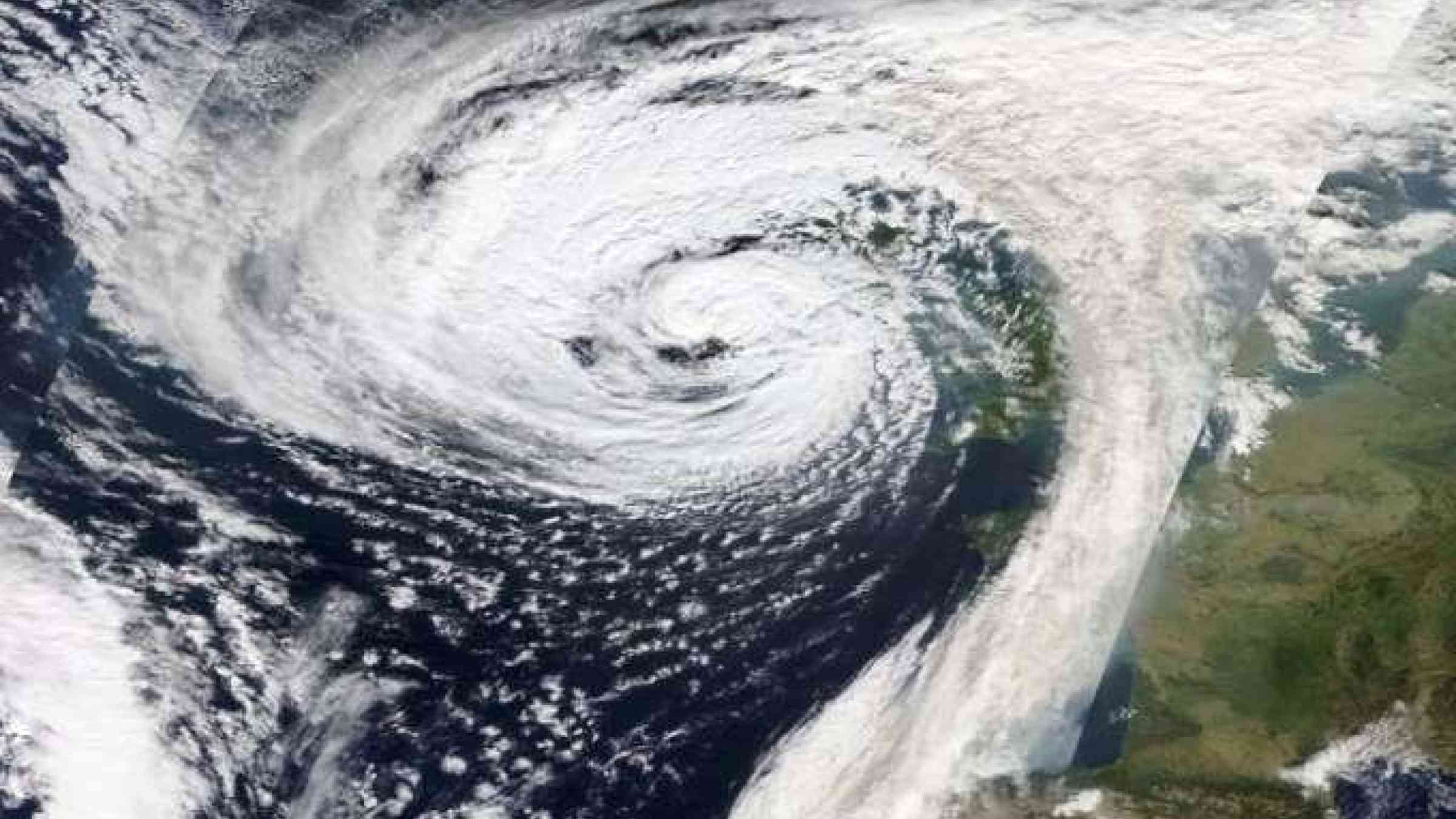Many of the natural disasters that make the news headlines are related to extreme or unusual weather events. In an open-access article recently published in Reviews in Geophysics, Steptoe et al. [2018]examine extreme atmospheric hazards effecting different countries and regions around the world, and their connections with the global climate system. The editor asked the authors to explain more about these hazards and describe how scientific insights can be used by governments, communities and corporations involved in disaster risk reduction.
What do you mean by “extreme atmospheric hazards”?
Extreme atmospheric hazards are high impact weather events, typically judged by human or financial losses, caused by processes occurring in the Earth’s atmosphere. The atmospheric processes responsible for extreme events are themselves often influenced by some other large-scale component of the Earth’s atmosphere-ocean system, such as ocean-wide changes to sea-surface temperatures.
Why is it important to understand regional extreme atmospheric events in the wider context of large scale atmosphere-ocean processes?
In atmospheric science, the links that connect large scale changes in the atmosphere or ocean (such as widespread changes in temperature or humidity in an ocean basin) with localized hazards relating to regional weather conditions (such as extremes of rainfall or temperature) are collectively referred to as teleconnections. Most local extreme events may be related to temporal changes in the large scale dynamics of the climate system. Large scale changes are predicted by weather and climate models more skillfully than local extremes so understanding the link is vital to understanding impacts.
There are many different kinds of teleconnection, typically named after the geographic location in which they are observed. Because any one teleconnection may influence weather conditions in multiple remote locations, understanding the interplay between regional extremes and teleconnections helps us to understand how different extreme hazards occurring in widely separate locations can have a common origin. In our review, we examined 16 different regional hazards and their interplay with eight different teleconnections.

Can you give a specific example of a regional atmospheric hazard and its connection to global teleconnections?
In our review, we find that rainfall over China shares the most connections with global drivers. We summarized academic papers that have identified links to six teleconnections including large scale atmosphere-ocean processes in both Northern and Southern Hemispheres.
The regional hazard with the strongest single linkage to a teleconnection are windstorms over Europe, and their connection to the North Atlantic Oscillation (NAO). The NAO describes a varying pattern in surface pressure across the North Atlantic. For European windstorms, the NAO pattern has a strong steering effect on winds high in the atmosphere, which in turn influences the path stormy weather takes as it approaches Europe.
Which is the most significant process that influences multiple hazards across different regions at the same time.
Our investigation finds that El Niño–Southern Oscillation (ENSO) influence 15 regional hazards. ENSO describes variations in sea-surface temperatures in the equatorial Pacific. In some cases, this connection is relatively well understood (for example, the way it influences rainfall over South Africa) and in other cases work is still being carried out to better understand the connection (such as its influence on Mexican rainfall).
How does a scientific understanding of these teleconnections help to understand the risks and prepare for extreme events?
Extreme events are the occasions that pose the greatest risk to communities and livelihoods. Hence, understanding the sorts of climatic situations where extremes events are more likely to happen represents one important facet of disaster risk management. By understanding the teleconnections and their associated hazards, it becomes possible to develop mitigation methods tailored to, and in advance of, potential risks.
For example, the relationship between rainfall in South and Southeast Asia is driven by connections with the Indian Ocean Dipole (IOD) and ENSO. Understanding this complex relationship may offer a predictive insight into rainfall and potential hazards, such as flood or drought, for the coming season. This predictive insight in one aspect the scientific community can contribute to in order to enable advanced planning to mitigate against potential risks.
How may these insights influence organizations to better plan for, and respond to, multi-hazard risks?
International policies reflect the growing understanding of atmospheric hazards and their interconnectivity.
Throughout the UN Sendai Framework for Disaster Risk Reduction 2015 – 2030, multi-hazard resilience is a consistent theme, reflected in guidance towards “inclusive and risk-informed” decision making and in the context of managing disaster risk effectively.
In practice, these insights have contributed to multi-hazard approaches being adopted in early warning systems across the globe. The Regional Integrated Multi-Hazard Early Warning System for Africa and Asia (RIMES) provides monitoring and data services to local tsunami centers and national meteorological services, as well partnering with research organizations on projects implementing early warning systems in-country, such as early flood warning in Bangladesh.
For private sector groups, such as the insurance industry, knowledge of the relationship between teleconnections and hazards can be vitally important when underwriting exposure, as it may increase their risk of multi-hazard losses across different regions.
—Hamish Steptoe, Met Office, UK; email: hamish.steptoe@metoffice.gov.uk; Sarah Jones, JBA Risk Management, UK; and Helen Fox, Office for National Statistics, UK
